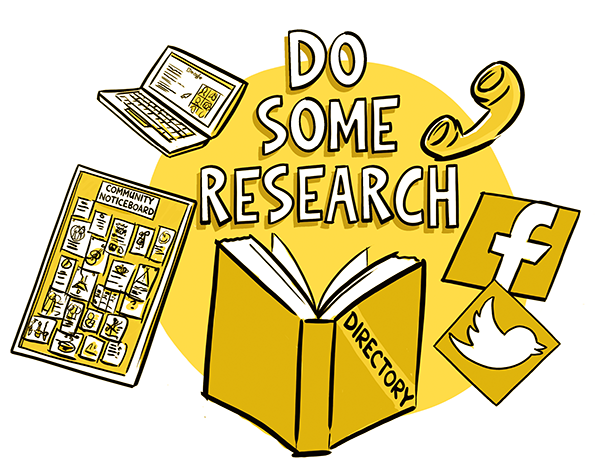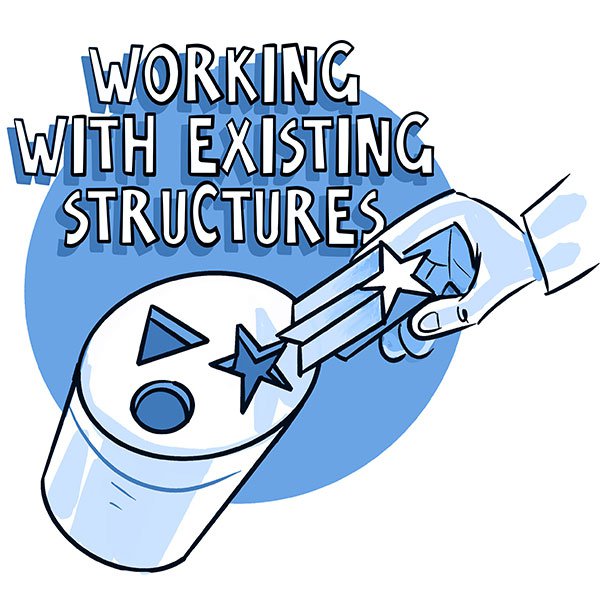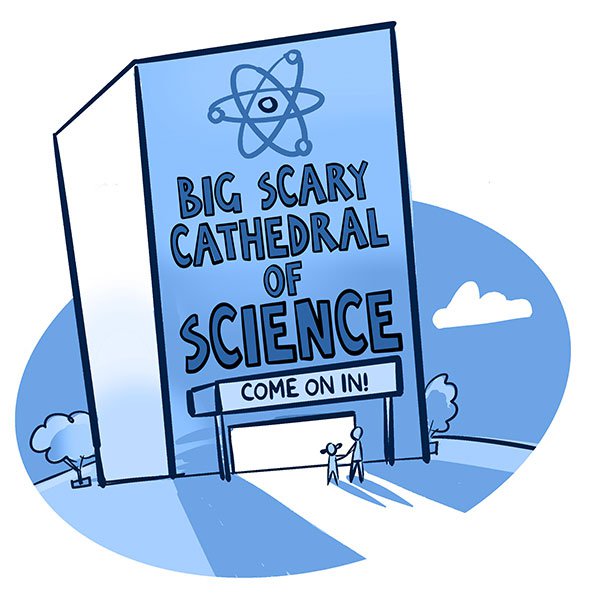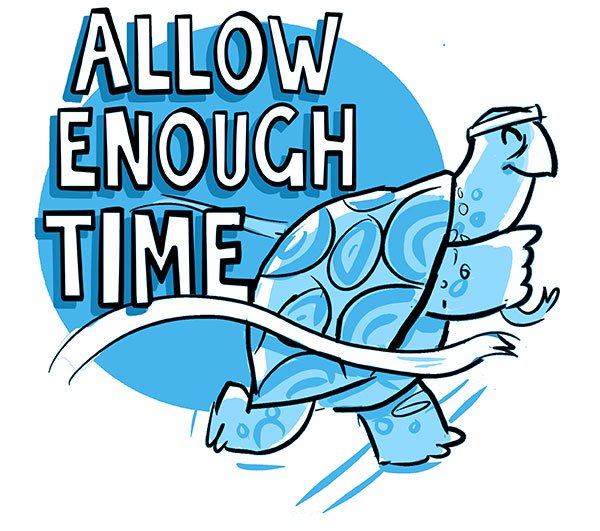Don't ignore the logistics
Consult community partners about the format of the activities and take on board their recommendations.
Paul Blakemore

Working or consulting with a partner who knows the participants’ experiences, interests and culture can help make the right decision on the timing or format for your engagements. Timing is crucial, and getting this right ensures the participants can attend and engage, so allow for flexibility in your programme and avoid ‘shoehorning’ people in at a time that suits you and not them.
Take into account cultural differences, holidays, faith or times of remembrance for certain groups. Ignorance could result in organising large catered events during Ramadan, or providing alcohol or mixed-gender events for adult communities where this is inappropriate.
Being culturally educated before you decide on the format of your engagements is critical to avoid jeopardising your relationship with your participants.
TOP TIP
A willingness to work outside of your venue for part of these engagements will be necessary to enable new audiences to feel welcome and comfortable. Guidance from our consultation was simply that neither 0% nor 100% of engagements should take place at the science centre, museum or university site.

Fitting with an existing provision
Your community partner is likely to be running successful programmes of their own (e.g. after-school clubs, family nights or regular interventions for young people at risk of exclusion). They may have regular communications (Facebook groups or celebratory events) with their families that can be creatively utilised. Building on known, trusted, existing provisions, rather than insisting on a series of new interventions, is more likely to engage your target audience and has the benefit of not adding extra logistical requirements for your participants. This can work particularly well if you have not previously worked with the community partner or group.
Case Study from Explore Your Universe
Aberdeen Science Centre were able to offer their community partners a set of activities that fit well with their existing provision and interests in inspiring and engaging their young people with science, and expanding their horizons. Similarly, Techniquest were able to work with their community partner, who were keen for the opportunity to have someone bring in expertise that they did not have, to build young people’s confidence about engaging with science.
What are your partner’s priorities?
Of course, as fun and engaging as your engagements are, always stay mindful that your programme often cannot be your partner’s most urgent priority. Science practitioners need to be as accommodating as possible, to be prepared for last minute changes to activities, participants, equipment or venues.
Case Study from Explore Your Universe
Science centres who managed their own expectations around what their partners would realistically be able to commit to – and complete in the time they had together – felt they had the most successful experience.
“Really trying to get hold of what the group wants to get out of it, what the objectives are for the group, to make sure that, as much as possible you’re meeting their expectations and meeting their needs. And then being flexible so that if the first thing that you do doesn’t work, or it doesn’t go quite how you’d planned or expected, then you’ve got scope to wiggle it around.”
Practitioner, Dynamic Earth
I was the familiar face; I could build an actual rapport with people.
Practitioner, Techniquest
TOP TIP
You may want to start your partnership by creating a shared vision and a set of shared values. What is it that your organisations would like to achieve that they can aim for together? What will success look like? This could become linked to the ‘end product’ you or the participants choose.

Consistent staff are key!
Involving more than one practitioner can be expensive, but there are many benefits. It not only mitigates the risks on the day (e.g. if a colleague can’t attend for some reason) and improves the legacy of the partnership (e.g. if someone leaves), it also extends the professional development benefits for more staff, helps with health and safety, and supports organisational learning by reflection.
Through consistent staffing and multiple interactions with the same practitioners, science centres, museums and universities can also become a trusted ‘brand’. Beyond simply knowing an individual, participants can feel they know the organisations, which can help individuals – who might otherwise be reluctant to visit – feel more comfortable and willing to do so due to a personal connection.
Case Study from Explore Your Universe
For young people and families involved in the programme, consistent staffing was critical. It allowed participants to build trust and begin to form positive relationships with science centre staff. In turn this supported their engagement.
When young people from Your Space visited Xplore! Science Discovery Centre, they looked for the staff members who had led sessions at their organisation. At Dynamic Earth, consistent catering staff serving snacks (a requirement of Covid) was yet another positive point of contact for families from the Syrian Dads Group.
“If we could have the same people, because that’s a big thing – don’t keep changing your staff”
Community partner, Cheshire
Case Study from Explore Your Universe
During the final stage of delivery, science centres were able to involve multiple members of staff. While there often continued to be a primary contact, many community partners in this phase experienced positive relationships with more than one science centre practitioner. This added stability to the partnerships, and was a strong enabler in continuing to work together after the programme had come to an end.

Time is an essential component of successful engagement and co-production. Build as much time as you can into the process so that activities can be created collaboratively. Time allows for more conversations to take place before engagements start. If you only have one-off interventions with participants, it is still worth building in long lead-times to develop your understanding with your community partner in order to get it right in the time you have. This lead time is even more useful if planning multiple engagements. It supports a stronger relationship for co-production, and gives you more room to be flexible.
It's time more than actions I think... like all relationships it's the time of getting to know one another, not in the sense of what you do but who you are and what's going on.
Practitioner, Cambridge Science Centre
TOP TIP
If you only have a one-year science engagement programme for development, delivery and evaluation, that also involves co-production of content, key learning from Explore Your Universe would be to work with a community partner you already have a good relationship with.
Ensuring you can arrange a long enough series of sessions that a meaningful relationship can be made. We ran 4 sessions but ideally would have done more if there had been time - I think 4 was the minimum required to build relationships. o build relationships.
Practitioner, Dynamic Earth
Case Study from Explore Your Universe
For some, the pause in interactions due to Covid-19 supported the gradual and organic development of partnerships, without the pressure of an impending activity: ‘When they came in on that first [workshop], it was almost like we’d known them for a long time… we’d built up quite a good relationship, even over digital means… they just felt part of the team’.
Community Partner, Oxford
Any genuine ambition to enable more equitable participation in science for previously marginalised communities requires commitment and resource to the time it takes to build meaningful relationships and trust.
Shaaron Leverment, Chief Executive, Association for Science and Discovery Centres
The details make a difference
When community partners and participants are visiting your venue, it’s the details that can make a difference. You can help participants feel welcome at your science centre, museum or university by making sure you don’t miss important details. For example, you can:
- Think about how they are getting to you. How can you support your community partner with the travel?
- Be aware of cultural and religious holidays when planning a visit
- Welcome the group with a familiar face. If you can’t be there yourself, be sure to brief front-of-house or security staff on the community partner’s arrival so they know they are expected and are welcomed by name
- Ensure you have sufficient staff for the day
- Allow for lateness and/or last-minute cancellations
- Provide plenty of appropriate and familiar refreshments
- Build time into sessions for casual conversation and for them to get to know the space
- Give participants confidence that no question is too silly to ask
- Offer a tour of the building, and include back-of-house to get a behind-the-scenes understanding of who you are
- Where possible and relevant, translate educational materials or maps/signs into participants’ preferred spoken languages.
